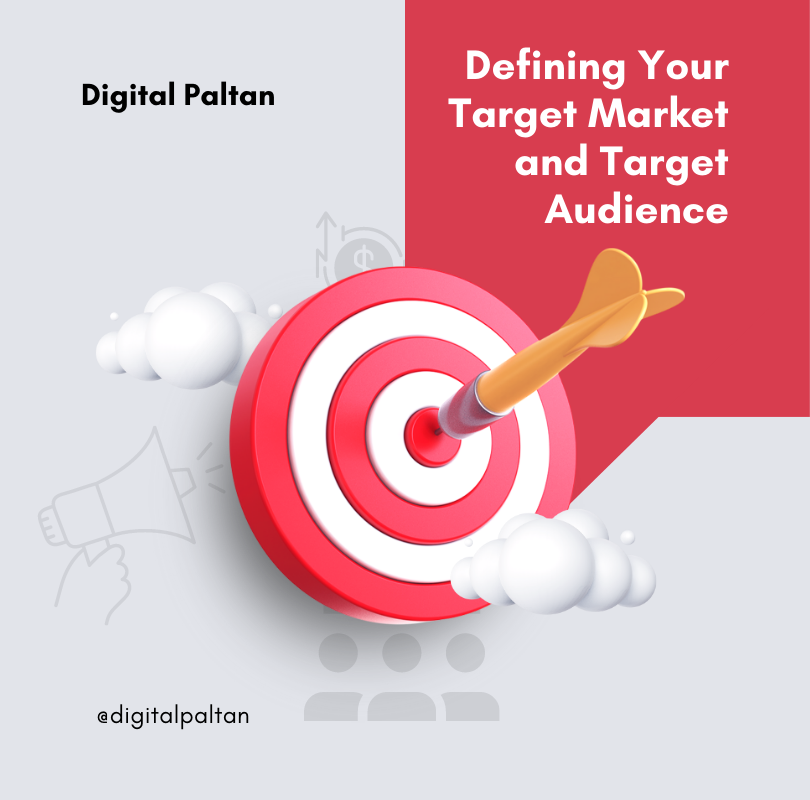In today’s rapidly evolving digital landscape, one of the most critical challenges faced by marketers is defining their target market and understanding their target audience. With a plethora of online platforms and channels available, it has become increasingly important to reach the right people with the right message at the right time. To achieve this, businesses must delve into customer segmentation, demographics, psychographics, buyer personas, market research, and more. In this blog post, we will explore the significance of defining your target market and audience and discuss various strategies and tools to overcome this digital marketing challenge.

- Understanding Customer Segmentation:
Customer segmentation is the process of dividing a broad market into distinct groups of individuals with similar characteristics, needs, and behaviors. By segmenting your audience, you can gain valuable insights into different customer groups and tailor your marketing efforts to effectively engage each segment. It involves considering factors such as demographics (age, gender, location, etc.), psychographics (values, attitudes, interests, lifestyles), and behavior patterns. - Creating Buyer Personas:
One powerful tool in defining your target market is developing buyer personas. Buyer personas are fictional representations of your ideal customers, created based on research and data analysis. These personas encompass key traits, motivations, pain points, and buying behaviors of your target audience. By understanding your buyer personas, you can create more personalized and targeted marketing campaigns that resonate with specific segments of your audience. - Leveraging Market Research:
Market research plays a crucial role in identifying and understanding your target market. It involves gathering and analyzing data related to customer preferences, market trends, competition, and industry insights. Through surveys, interviews, focus groups, and online analytics, you can uncover valuable information about your target audience’s needs, desires, and purchasing habits. This data-driven approach enables you to make informed decisions and refine your digital marketing strategies accordingly. - Conducting Audience Profiling and Analysis:
Audience profiling and analysis involves examining your existing customer base to identify common characteristics, behaviors, and preferences. By analyzing data such as demographics, psychographics, and purchase history, you can create customer profiles that represent different segments within your target market. This helps in tailoring your marketing messages, offers, and channels to effectively reach and engage your intended audience. - Understanding Consumer Behavior:
Consumer behavior is a key factor in defining your target market and audience. By studying how consumers interact with digital platforms, make purchase decisions, and engage with brands, you can gain insights into their motivations and preferences. Analyzing consumer behavior allows you to anticipate their needs, address pain points, and deliver personalized experiences, thereby optimizing your digital marketing efforts. - Effective Target Market Identification, Analysis, and Definition:
Identifying your target market requires a comprehensive analysis of the different customer segments available to your business. By considering factors such as demographics, psychographics, and behavior patterns, you can define the specific groups of people who are most likely to be interested in your products or services. This targeted approach enables you to allocate your resources more efficiently, improve customer acquisition, and maximize return on investment. - Crafting an Effective Digital Marketing Strategy:
Defining your target market and audience forms the foundation of a successful digital marketing strategy. Once you have identified your target market segments, you can tailor your messaging, content, and campaigns to resonate with each group. By utilizing customer segmentation strategies, such as personalized emails, targeted social media ads, and relevant website content, you can create a more impactful and engaging digital presence. - Harnessing Consumer Insights and Customer Journey Mapping:
Consumer insights are invaluable in understanding your target market’s preferences and behaviors. By leveraging data analytics, social listening tools, and customer feedback, you can uncover actionable insights that drive your digital marketing efforts. Additionally, mapping the customer journey allows you to understand the various touch.



